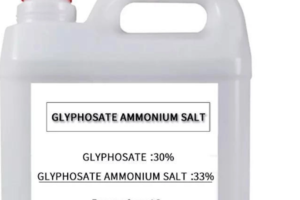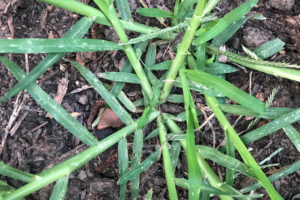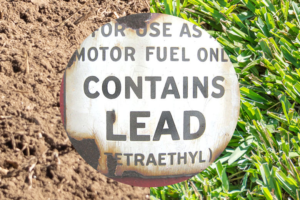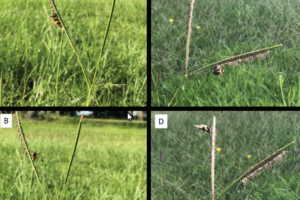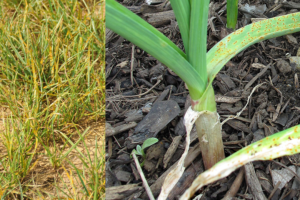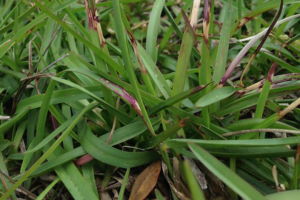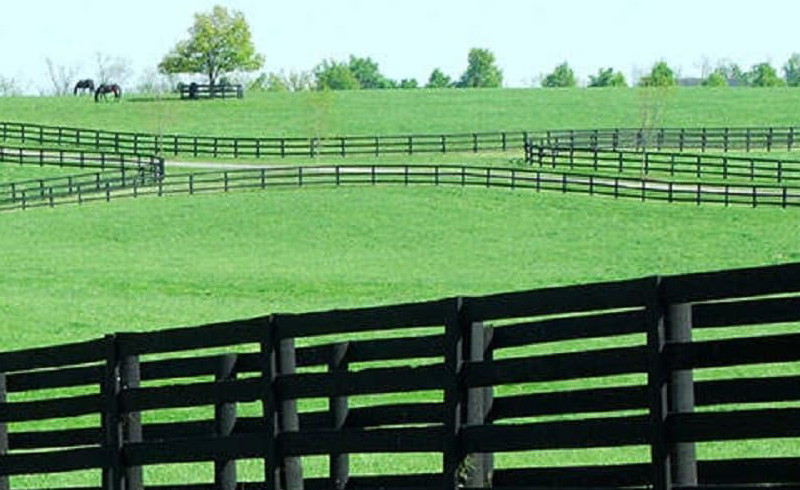
Introduction
Brief Overview of Kentucky Bluegrass and its Significance in Landscaping
Kentucky Bluegrass, often called the “king of grasses,” is a favorite among gardeners and landscapers. Its lush green appearance, soft texture, and ability to thrive in various conditions make it a top choice for lawns nationwide. But Kentucky Bluegrass has a fascinating biological story beyond its beauty that many might need to know. It’s not just about how it looks on the surface but also about the intricate processes beneath the soil, contributing to its resilience and charm.
The Mystery of Rhizome Growth in Kentucky Bluegrass
One of the secrets behind the success of Kentucky Bluegrass is its rhizomes. Think of rhizomes as underground stems that spread horizontally beneath the soil, sprouting new plants as they grow. This unique growth mechanism allows the grass to cover ground quickly, repair itself from damage, and compete effectively with weeds. But what triggers the growth of these rhizomes? And how can understanding this process benefit gardeners and landscapers? This article delves into the science behind it, breaking down complex research into bite-sized, easy-to-understand pieces for every gardening enthusiast.
Introduction to Kentucky Bluegrass and Rhizome Growth
Kentucky Bluegrass: The Landscaper’s Gem
Kentucky Bluegrass is a gardener’s dream come true. Known for its lush green hue and soft texture, it’s a staple in many lawns and gardens nationwide. But what sets it apart isn’t just its aesthetic appeal. This grass variety is robust, adaptable, and can thrive in various conditions. Its resilience is partly due to its unique growth mechanism, which involves underground stems known as rhizomes. These rhizomes help the grass spread and play a crucial role in its ability to repair and ward off weeds.

The Intricacies of Rhizome Growth
Rhizomes are fascinating structures. They grow horizontally beneath the soil, branching out and giving rise to new plants as they expand. This means that even if a patch of Kentucky Bluegrass faces damage, the rhizomes can spring into action, filling in the gaps and ensuring the lawn remains lush and green.
But the growth of these rhizomes is expected. Various factors, both internal and external, influence it. By understanding these factors, gardeners and landscapers can harness the full potential of Kentucky Bluegrass, ensuring their lawns remain the envy of the neighborhood.
The Role of Phytohormones
Nature’s Growth Boosters: What are Phytohormones?
Phytohormones, often called plant hormones, are like nature’s secret sauce for plants. Just as humans have hormones that regulate growth, mood, and many other functions, plants have hormones that dictate how they grow, respond to the environment, and even repair themselves. These aren’t the kind of hormones you’d find in animals, but they play a similarly crucial role. For gardeners and landscapers, understanding phytohormones can be a game-changer. It’s like getting a peek into the inner workings of plants, allowing for better care and more impressive gardening results.
Cytokinins: The Star Players for Grass Growth
Among the various phytohormones, cytokinins are the real MVPs for grass growth, especially in Kentucky Bluegrass. Think of cytokinins as the ultimate growth boosters. They play a pivotal role in cell division, ensuring plants thrive. For Kentucky Bluegrass, cytokinins are particularly essential for the growth and development of rhizomes.
When the grass gets its dose of cytokinins, it’s like giving it energy, ensuring those underground stems thrive and spread, leading to a denser, greener lawn. So, for those looking to achieve that perfect lawn, understanding and harnessing the power of cytokinins can make all the difference.
A Tale of Two Grasses: Multi-Rhizome vs. Few-Rhizome
The Diversity in Kentucky Bluegrass
Kentucky Bluegrass isn’t just a one-size-fits-all kind of grass. There’s a fascinating diversity within this species, especially when it comes to its rhizomes. Some varieties of this grass are like the overachievers of the plant world, producing multiple rhizomes and spreading out to create a thick, lush carpet of green. These are the multi-rhizome types.

On the other hand, a few rhizome types produce fewer rhizomes, as the name suggests. They might spread out less aggressively but have unique charm and benefits. Knowing the difference between these two can help gardeners and landscapers decide which type to plant, depending on their lawn goals.
Why Rhizome Count Matters
To the untrained eye, the grass is just grass. But the number of rhizomes a Kentucky Bluegrass plant produces can make a difference for those in the know. Multi-rhizome types are the go-getters, quickly spreading and filling in gaps, making them ideal for those who want a dense, uniform lawn in less time. They’re like the sprinters of the grass world.
Few-rhizome types, on the other hand, take their time. They grow more leisurely, but this can be advantageous in gardens or landscapes where a more relaxed, natural look is desired. They’re the marathon runners, steady and consistent. Understanding this distinction can help gardeners and landscapers tailor their lawn care strategies and achieve the exact look and feel they aim for.
The Metabolic Pathways: A Deep Dive
What Are Metabolic Pathways?
Imagine a busy highway system inside the grass, where various substances travel to keep the plant healthy and growing. These highways are what scientists call “metabolic pathways.” In simpler terms, they’re routes that nutrients, water, and other essential elements take within the plant to ensure it functions correctly. Just like how we need our circulatory system to transport blood and nutrients throughout our bodies, plants have these pathways to move essential compounds where they’re needed most.
Why They Matter in Grass Growth
Now, you might wonder why these internal highways in the grass are essential for gardeners and landscapers. Well, the efficiency of these pathways determines how well the grass grows, how it responds to different conditions, and even how it recovers from stress.
For Kentucky Bluegrass, understanding these pathways can give insights into how the grass develops its rhizomes. If there’s a traffic jam or blockage in these pathways, it could affect the grass’s overall health and appearance. By ensuring these routes are clear and functioning well, gardeners can ensure their lawns remain lush, green, and resilient against various challenges.
Practical Insights for Gardeners and Landscapers
Optimizing Grass Growth
Understanding the science behind grass growth can be a game-changer for those who love a lush, green lawn. While the technical details of phytohormones and metabolic pathways might seem overwhelming, the takeaway is simple: specific internal processes in the grass can influence its growth and health.
Gardeners can ensure a denser, more resilient lawn by choosing grass varieties that have been studied and optimized for better rhizome development, like the Kentucky Bluegrass. It’s like choosing a car with a more efficient engine; you get better performance with the same amount of fuel.
Dealing with Lawn Challenges
Every gardener or landscaper has faced challenges with their lawn, whether patches that don’t grow well, areas that dry out quickly, or spots prone to diseases. The research on Kentucky Bluegrass provides insights into how internal grass processes can influence these challenges. For instance, a grass variety with better rhizome development can recover faster from physical damage or resist drought better.
So, when faced with a lawn issue, consider the grass type you’re working with instead of looking for external solutions like fertilizers or pesticides. Sometimes, the solution might be as simple as choosing a variety better suited to your garden’s needs.
FAQ
What are phytohormones and why are they important for grass growth?
Phytohormones are natural chemicals in plants that regulate growth and development. In Kentucky Bluegrass, they play a crucial role in determining how the grass spreads and grows, especially in the formation of rhizomes.
How do multi-rhizome and few-rhizome grasses differ?
Multi-rhizome grasses have multiple underground stems, allowing them to spread faster and cover more ground. In contrast, few-rhizome grasses grow slower and have fewer underground stems, making them less dense.
Why is understanding metabolic pathways important for gardeners?
Metabolic pathways are the series of chemical reactions in plants that produce essential compounds for growth. By understanding these pathways, gardeners can make informed decisions on lawn care to promote healthier grass growth.
How can the study on Kentucky Bluegrass benefit my lawn?
The research provides insights into the grass’s growth patterns and responses to different conditions. By applying this knowledge, you can optimize care practices to ensure a lush, green lawn.
Are there practical applications of this research for landscapers?
Yes, landscapers can use the findings to select the best grass varieties for specific conditions and to tailor maintenance practices for optimal growth and spread.
How do phytohormones affect rhizome growth in Kentucky Bluegrass?
Phytohormones regulate the formation and growth of rhizomes in Kentucky Bluegrass. The balance of these hormones can determine whether the grass has many or few rhizomes.
What are the implications of this study for other grass types?
While the research focused on Kentucky Bluegrass, the findings on phytohormones and metabolic pathways can offer insights into the growth patterns of other grass types, helping gardeners make informed choices.
How can I apply the insights from this study to improve my garden or lawn?
By understanding the science behind grass growth, you can tailor your gardening practices, such as watering, mowing, and fertilizing, to align with the grass’s natural growth patterns, ensuring a healthier lawn.
Conclusion
The Science Behind a Lush Lawn
To the untrained eye, a lawn is just a patch of green, but for gardeners and landscapers, it’s a canvas of potential. The study on Kentucky Bluegrass has shed light on the intricate processes that go on beneath the surface, influencing how our lawns grow, spread, and respond to challenges. While “phytohormones” or “metabolic pathways” might sound complex, they’re essentially the grass’s internal mechanisms working to ensure it thrives. By understanding these processes, even at a basic level, gardeners can make more informed decisions about lawn care, ensuring propertheir green spaces remain vibrant and healthy.
Empowering Gardeners with Knowledge
Knowledge is power, and in the world of gardening, it’s the key to a thriving outdoor space. The insights from this research don’t just benefit scientists; they offer practical information for anyone looking to optimize their lawn’s health. Whether you’re a seasoned landscaper or a newbie gardener, understanding the science behind your green space can only enhance your gardening experience. It’s a reminder that every blade of grass, every patch of soil, is teeming with life and potential, waiting for the right care and attention to truly shine.
Citations:
Ran, Fu, Bai, Xiaoming, Li, Juanxia, Yuan, Yajuan, Li, Changning, Li, Ping, Chen, Hui (2023): Cytokinin and Metabolites Affect Rhizome Growth and Development in Kentucky Bluegrass (Poa pratensis). Biology, 12 (8), S. 1120 Online verfügbar unter: URL: https://dx.doi.org/10.3390/biology12081120

Bob Green, a passionate lawn care enthusiast with over two decades of landscaping experience, is this website’s proud owner. His vast knowledge of horticulture and dedication to helping homeowners maintain beautiful lawns are reflected in the valuable content he shares on his platform. John has always been interested in Agrostology.









